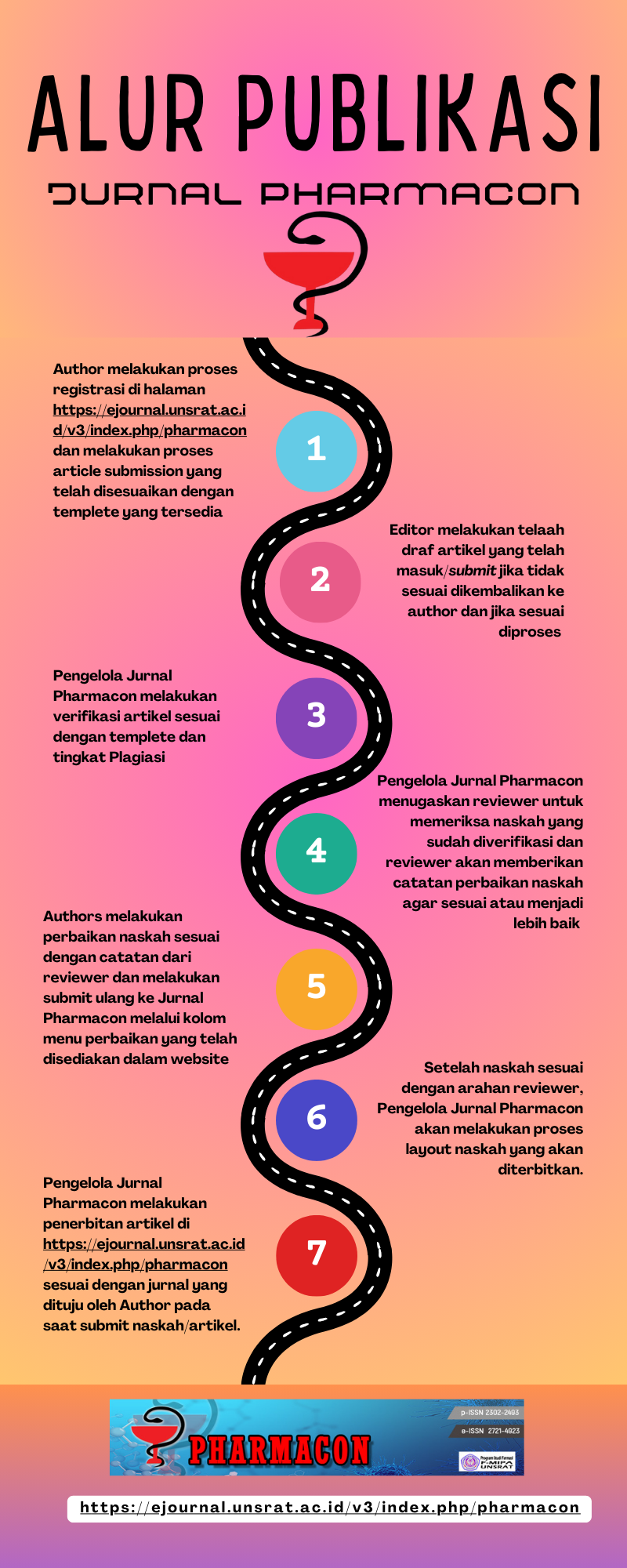Testing of Bacterial Resistance in Urine of UTI Patients to Levofloxacin and Ciprofloxacin Antibiotics in Makassar Prodia Clinic Laboratoryâ€
Keywords:
UTI, urine, urine culture, ciprofloxacin, levofloxacinAbstract
ABSTRACT
Urinary tract infection (UTI) is a clinical condition due to the proliferation of microorganisms that cause inflammation in the urinary tract and cause bacteriuria. Bacterial resistance to antibiotics continues to change, so research is carried out on the level of resistance to certain antibiotics in order to facilitate the treatment of UTI. Urine culture examination includes culturing the suspect bacteria, identifying and testing the antibiotics ciprofloxacin and levofloxacin. This study uses a descriptive research design. The sample of this study was 27 samples taken from patients who had been diagnosed with UTI and underwent therapy from a doctor. The results of the study of bacteria causing UTI resistance to the antibiotic levofloxacin 41%, and to the antibiotic ciprofloxacin 44%. Streptococcus agalactiae bacteria were found to be antibiotic resistant to levofloxacin and ciprofloxacin 37.5%, Escherichia coli was found to be antibiotic resistant to levofloxacin and ciprofloxacin 50%, Staphylococcus aureus was to be antibiotic resistant to levofloxacin 0% and ciprofloxacin 25%, and to floxacin to the antibiotic floxacin 25%, to be antibiotic resistant to floxacin. Streptococcus pyeogenes was found to be 0% resistant to levofloxacin and ciprofloxacin antibiotics, and to Klebsiella oxytoca and Enterococcus faecalis were found to be 100% resistant.
References
REFERENSI
CHROMargar TM. 2017 Orientation Chromogenic media focus on Urinary tract pathogens. From : http://www.chromagar.com
CLSI. 2020. Perfomance Standards for Antimicrobial Susceptibility Testing 30th ed. CLSI supplement M100 Wayne, PA: Clinical and Laboratory Standards Institute.
Davis NG, Silberman M. 2020. Bacterial Acute Prostatitis. StatPearls Publishing. From: https://www.ncbi.nlm.nih.gov/books/NBK459257/
Douglas-Moore, J.L. & Goddard, J. 2018. Current Best Practice in The Management of Cystitis and Pelvic Pain. Ther Adv Urol
EAU, European Association of Urology. 2015. Guidelines on Urological Infection. s.l.: s.n
Elliott T, Worthington T, Osman H, Gill M. 2013. Mikrobiologi Kedokteran & Infeksi Edisi 4. Jakarta : EGC
Fauci, A.S., Kasper, D.L. Hauser, S.L. et al, 2008. Harrison‟s Principles of Internal Medicine 17th ed. United States Of America : McGraw Hill.
Febrianto,A.W., Mukaddas,A., Faustine,I. 2013. Rasionalitas Penggunaan Antibiotik pada Pasien Infeksi Saluran Kemih (ISK) di Instalasi Rawat Inap RSUD Undata Palu. Palu :Prodi Farmasi, Uniersitas Tadulako. Online Jurnal of Natural Science Volume 2
Goldman JA, Kearns GL. 2011. Fluoroquinolone Use in Paediatrics: Focus on Safety and Place in Therapy. USA: Expert Committee on the Selection and Use of Essential Medicines
Gradwohl S. E. 2011. Urinary Tract Infection Guideline. USA : Michigan Medicine
Grabe. Dkk. 2015. Guideline on urological infection. Europian Association of Urology
Greenwood, D., Barer, M., Slack, R., & Irving, W. 2012. Medical Microbiology (Eighteenth).
Guerrant, R. L., Walker, D. H., & Weller, P. F. 2011. Tropical Infectious Diseases: Principles, Pathogens and Practice (third). Saunders Ltd.
_______ 2006. Anatomi Fisiologi untuk Mahasiswa Keperawatan. Jakarta : EGC
Toelle, N.N., Lenda, V. 2014. Identifikasi dan Karakteristik Staphylococcus Sp. dan Streptococcus Sp. dari Infeksi Ovarium Pada Ayam Petelur Komersial. Jakarta : Ilmu Ternak
TQA pusat, 2015. Instruksi Kerja Kultur Urin. Jakarta : TQA Prodia
WHO. 2013. About Urinary Tract Infection. World Health Organization, Geneva : Available from htto://www.who.int
Downloads
Published
How to Cite
Issue
Section
License
Copyright (c) 2022 PHARMACON

This work is licensed under a Creative Commons Attribution-NonCommercial 4.0 International License.
Authors who publish with this journal agree to the following terms:
- Authors retain copyright and grant the journal right of first publication with the work simultaneously licensed under a Creative Commons Attribution-NonCommercial 4.0 International License that allows others to share the work with an acknowledgement of the work's authorship and initial publication in this journal.
- Authors are permitted and encouraged to post their work online (e.g., in institutional repositories or on their website) prior to and during the submission process, as it can lead to productive exchanges, as well as earlier and greater citation of published work (See The Effect of Open Access)










